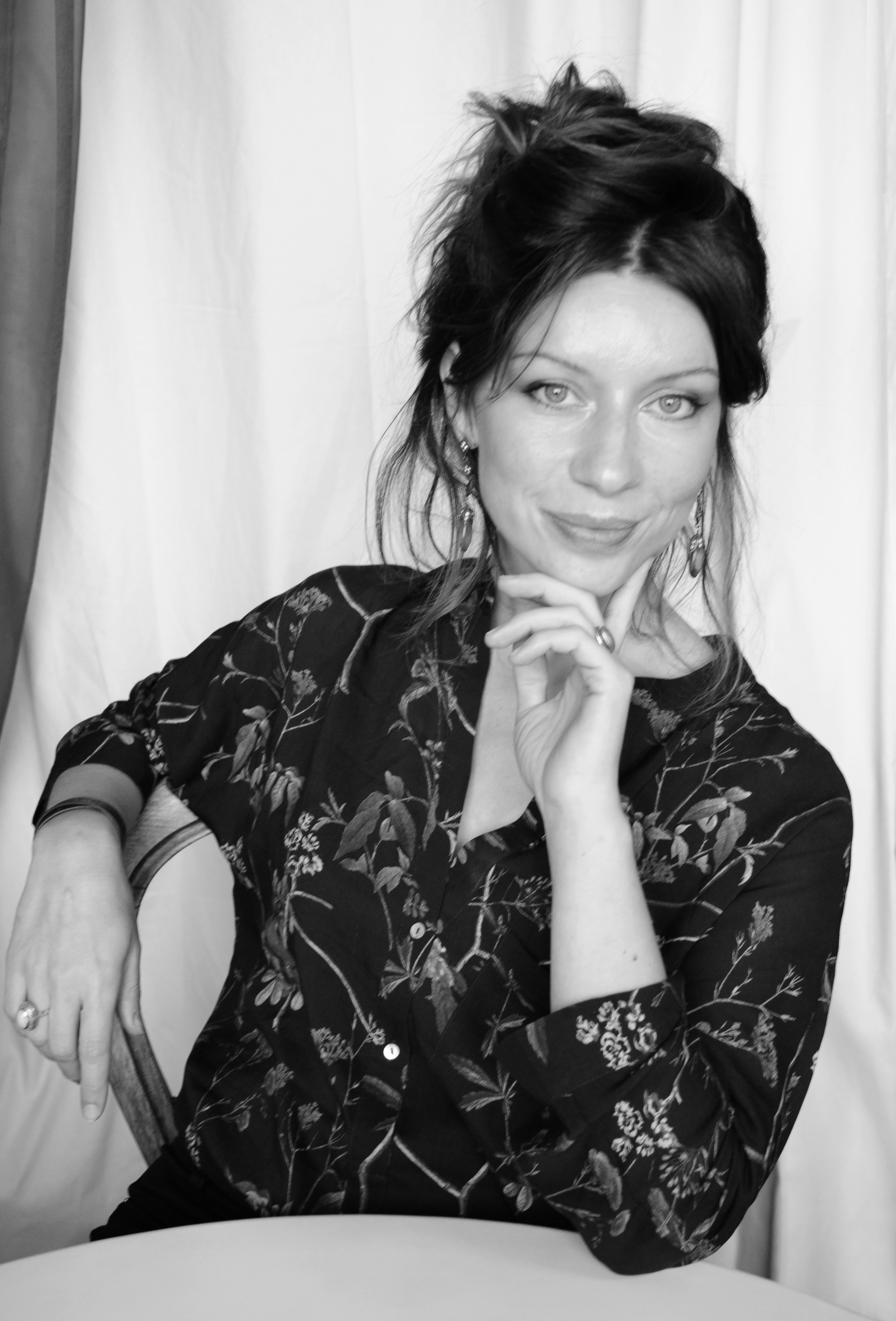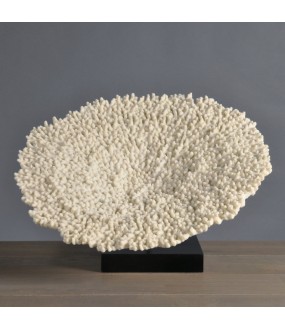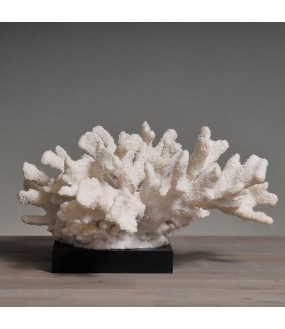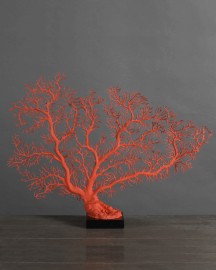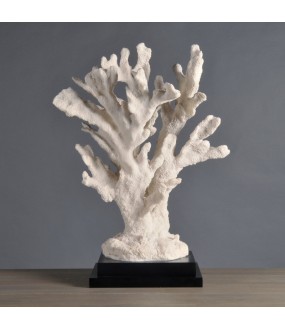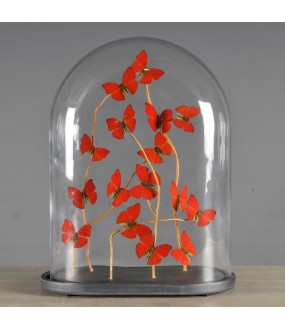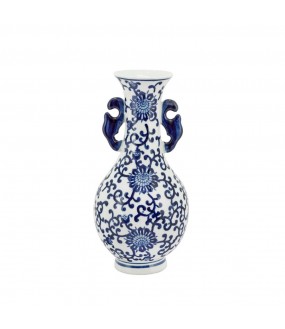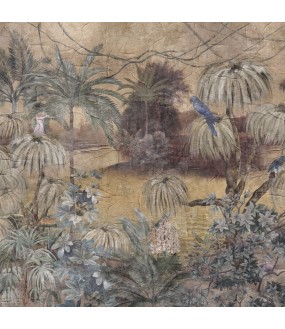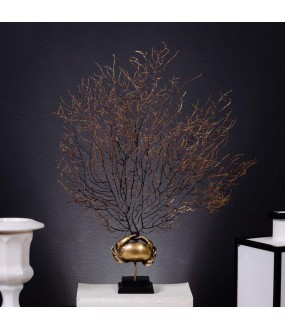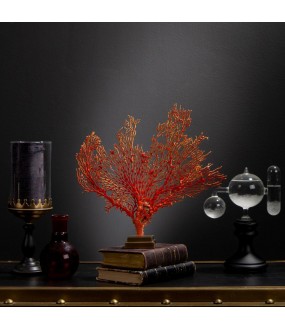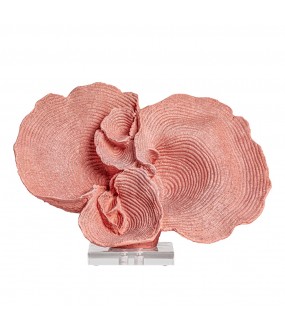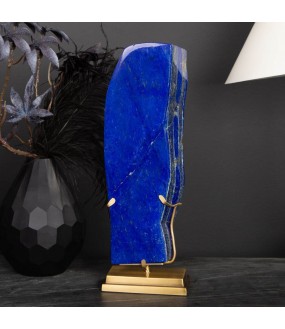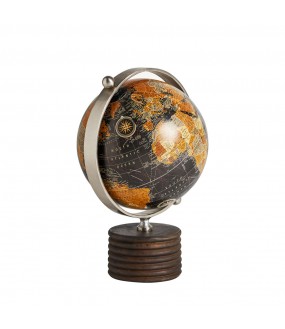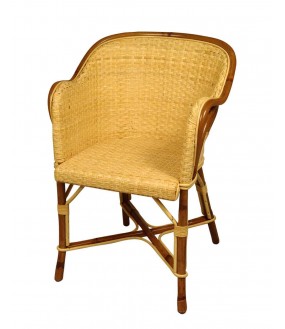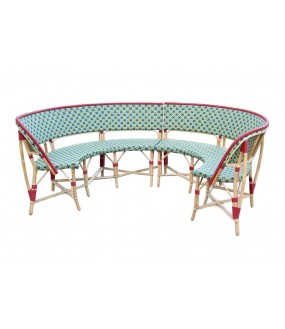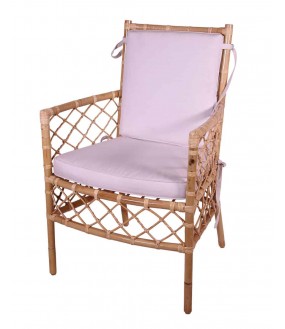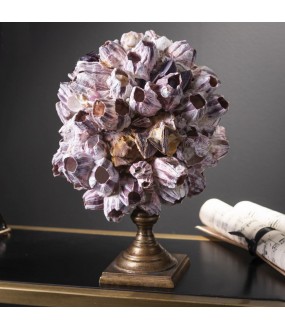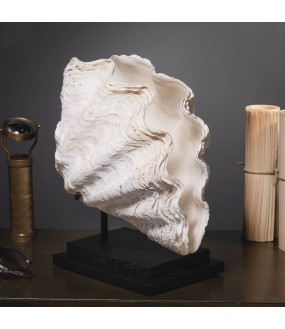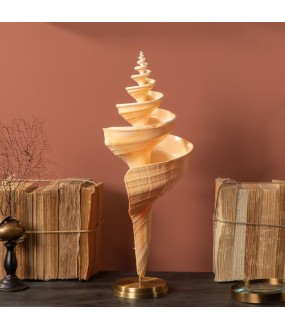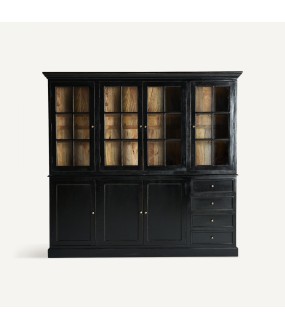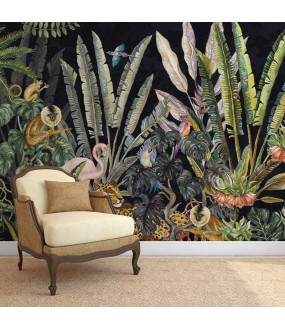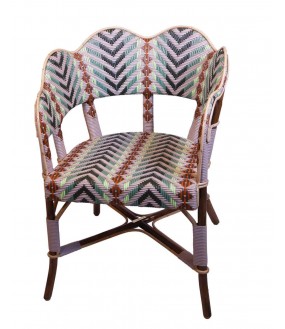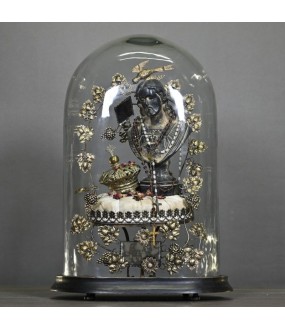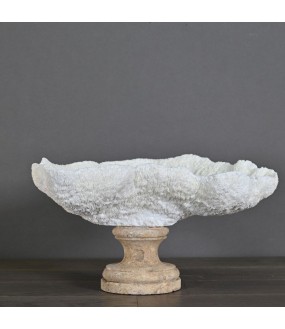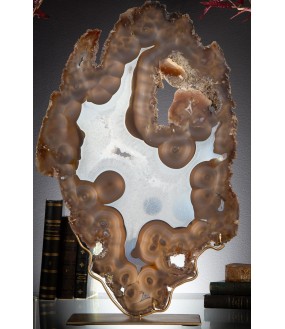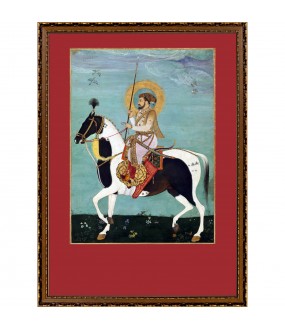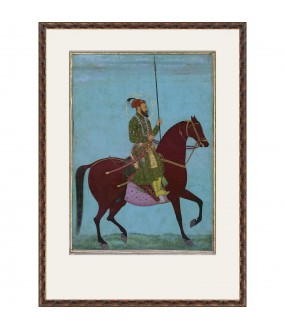DESIGN & TRADE SERVICES
Interior Decoration Service for Individuals and Professionals.
Contact: Héloïse CARDI - Tel: +33 (0) 160 440 129
Founded in 2010 by Héloïse Cardi, Arteslonga claims: "To Exist is a Fact, to Live is an Art" and likes to explore and makes styles and eras meet in a desire for harmony and softness.
" The most cherished wish of Arteslonga is to bring beauty and a perpetual and benevolent harmony in your interior decoration so that you can achieve well-being in your place of life or work. Only true understanding, deep vision of things, the right view, and the diligence in creation and execution can enable this invaluable quest to be achieved: joy and well-being. "
Héloise Cardi - Founder and Artistic Director of Arteslonga - Interior Decorator.
We are here to guide you.
We know that changing your style can be a challenge, but whether you need help designing a completely new home or you do not know which sofa to choose or the perfect color for your bedroom, we're here to guide you .
Send us an inquiry or contact us: contact@arteslonga.com - Tel: +33 (0) 1 60 44 01 29 and we will organize a telephone appointment with you whenever you wish.
1 - The first step is to understand your wishes and what you want to achieve in your space.
We can visit you at home or you can send us your plans and photos. In this way, we can discover your tastes and priorities and take into account any relevant information about you and your home.

Interior Decoration Mood Board by Arteslonga
2 - Following our first exchange, we will make suggestions and recommendations to make the most of your space and integrate your ideas.

Interior Decoration Mood Board by Arteslonga
s)%202.jpg)
Interior Decoration Mood Board by Arteslonga
3 - We will also explore the materials and make a selection of furniture and decorative accessories from the house Arteslonga.
s).jpg)
Interior Decoration Mood Board by Arteslonga
4 - When you are 100% satisfied with your new interior, we will place an order for your selection of furniture and decorative items.
Our professional service team will deliver and position your furniture.

Interior Decoration Mood Board by Arteslonga
5- La réalisation de vos travaux de décoration.
Nous pouvons gérer et coordonner la bonne réalisation de vos travaux de décoration.
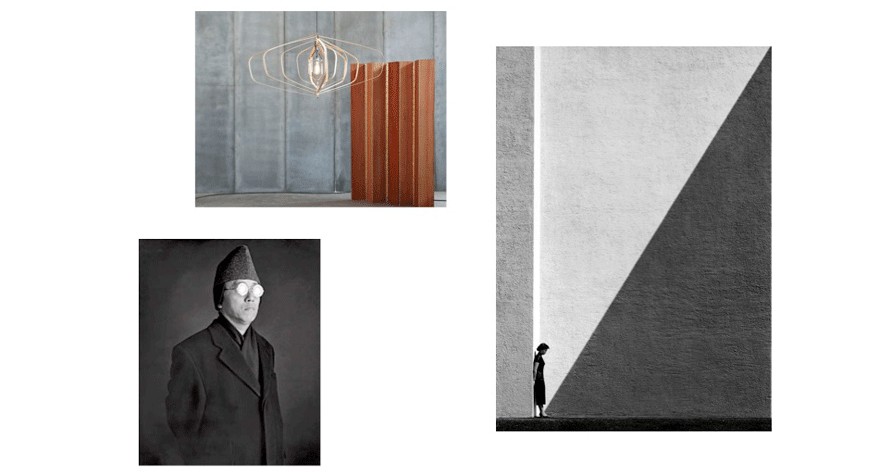
---
For more information about our decor ambiences, vintage interiors styles, retro home decoration ideas, art decoration, please click here.
Arteslonga, French vintage home decoration and lifestyle house offers exclusive vintage homeware, vintage decoration ideas, inventive atmosphere and styles in a retro and vintage style.
As an art gallery, vintage decorative objects and vintage furniture selected by Arteslonga are available in single sale within unique vintage home ambiences and vintage styles.
Arteslonga goes beyond a vintage decoration and retro furniture shop by offering constantly renewed vintage home ambiences.
All our vintage and retro furniture and objects are available through several decoration atmospheres mixing retro decoration, exquisite ambiences in vintage styles, as, for example, the atmosphere of an artist's studio or a Venetian Italian lounge, the seaside atmosphere in Britany or Saint Tropez in the 70s, a poetic room in Languedoc, a romantic alcove in Provence, or an oriental vintage atmosphere in Marocco…
All these creations are exclusive achievements signed by the artistic direction of Arteslonga.
Arteslonga is a vintage and retro home decoration shop which provides an endless source of vintage interiors ideas. Arteslonga will bring to you several and unique vintage interiors atmospheres by mixing eras, styles, colors and materials. Arteslonga is constantly renewing its offer to provide you with unique items, rare, authentic, unusual, useful to create a unique ambience and style.
You wander romantic and glamorous stagings, French knowledge, always at the forefront of the trend.
These vintage and retro home ambiences will give you an idea of the decorative possibilities for your home in a retro, vintage or shabby chic style.
Looking for vintage or retro style decorating ideas for your room? Visit the different moods of interior design to find your ideas.
Go through the artist's studio and the Italian lounge and take a rest in the poetic room Napoleon III style. Escape to the Eastern world and hide in the romantic alcove.
Stroll along the seaside and meet the fisherman's wife ...
Arteslonga, a gallery of vintage art decoration mixing styles and eras.
"To exist is a fact, Living is an Art."
Arteslonga, French Home Decoration and Lifestyle House.
Active filters
-
White Resin Acropora Hyacintus XL
€340.00Beautiful reproduction of a white coral in resin on a base.
H 15 x 18 x 20 cm
Coral is actually an animal of the Cnidarian phylum. Corals generally live in colonies of individuals called “polyps” which are “superorganisms”. Each polyp secretes its own exoskeleton; depending on the species, this exoskeleton is hard or soft.
Our collection of corals in synthetic material is handcrafted, reproducing identically the texture of these living specimens, most of which are now protected.
-
Coral in White Resin XL H23cm
€350.00Beautiful XL reproduction of a white coral in resin on a base
Coral is actually an animal of the Cnidarian phylum. Corals generally live in colonies of individuals called “polyps” which are “superorganisms”. Each polyp secretes its own exoskeleton; depending on the species, this exoskeleton is hard or soft.
Our collection of corals in synthetic material is handcrafted, reproducing identically the texture of these living specimens, most of which are now protected.
-
Gorgon in Vermillon Red Resin - Repro
€170.01Reproduction of a Gorgon in red Vermillo resin on a black base in the Napoleon III style. The Red Gorgonians line the rocky drop-offs between 20 and 100 meters deep. It is necessary to use a flashlight to appreciate their brightness, because at this depth, the red appears dark blue.
-
Giant Branch Coral White Resin H66cm
€840.00Reproduction of a giant branch coral from the lagoons of Oceania.
Coral is actually an animal of the Cnidarian phylum.
Corals generally live in colonies of individuals called “polyps” which are “superorganisms”.
Each polyp secretes its own exoskeleton; depending on the species, this exoskeleton is hard or soft.
Our collection of corals in synthetic material is handcrafted, reproducing identically the texture of these living specimens, most of which are now protected.
-
Pair of Red Travertine Trays ø21cm
€320.00Two round trays in red travertine, natural stone.
21cm diameter
Craftsmanship
Weight: 0.8 kg each
-
Red Butterflies Globe H45cm
€570.00A flight of red butterflies delicately presented on Salix branches and protected by an elegant bridal globe.
This reminds us of the naturalist showcases that adorned the galleries of Natural History museums in the 19th century.
Each globe is a unique and original creation, made by hand in the workshop.
Packaging specifically reinforced and suitable for shipment.
-
Chinese Porcelain Vase with Handles H36cm
€120.00Chinoiserie vase in white ceramic with double handles with blue oriental floral motifs.
Completely hand painted.
Homemade.
A limited edition.
Vase height: 36 cm
-
Fresco Wall Edonia, Made to Measure
The Edonia fresco wall, made to measure.
A scene of the canopy bathed in light and filled with wonders.
It is a unique wall decoration element. This fresco is a real painting, a permanent journey full of surprises in which this fresco takes us.
This fresco is only suitable for interiors (walls), resistant to shocks and easy to maintain.
Quote on request, specify the height and width to be covered. A Good to print for validation will be submitted to you before going into production.
 Impact resistant
Impact resistant Washable
Washable Embossed surface
Embossed surface Application with glue
Application with glue Removable
Removable -
Real Clam Shell on Bronze Stand.
€6,000.00Tridacna Gigas Clam on an iron stand.
A magnificent unique piece, a rarity!
Very rare Tridacna gigas font presented on a custom forged stainless steel support. Its two sides are remarkable. It has of course its CITES number which proves its origin.
This giant clam (Tridacna gigas) is the largest bivalve mollusk in the world.
This very large shell was set by a French bronze craftsman. A branch has been cast and delicately encircles this huge shell.
Species subject to CITES regulations. Trade in specimens of these species is subject to particularly strict regulations so as not to endanger their survival, and should only be authorized under exceptional conditions.
L 85cm x 45cm x H 58cm
-
Sea Fan on Brass Crab Base H43cm
€280.00Brass crab wearing a real Philippine gorgonian.
Black brass base.
Gorgonians, like corals, are animals living in the form of sessile colonial polyps, organized in a tree structure. Each polyp has 8 tentacles which filter the plankton and consume it.
The general structure, a skeleton both flexible and hard, called gorgonine do not grow towards the sun (it does not require light to develop) but perpendicular to the current, so as to filter a maximum of water flow.
-
Red and Yellow Gorgon, Brass Base H30cm
€270.00A red and yellow gorgon on a brass base.
This gorgonian is the dazzling mixture of red and yellow. This Leptogorgia hebes comes from the Gulf of Mexico.
It grows sheltered from the sun's rays in areas between 10 and 300 meters deep. Where no one sees its vibrant colors. Their color is of course natural.
Attached perpendicular to their support, the colonized polyp branches filter the water with the current to capture the micro-organisms in suspension.
Gorgonians, like corals, are animals living in the form of sessile colonial polyps, organized in a tree structure. Each polyp has 8 tentacles which filter the plankton and consume it. The general structure, a skeleton both flexible and hard, called gorgonine do not grow towards the sun (it does not require light to develop) but perpendicular to the current, so as to filter a maximum of water flow.
A very beautiful decorative object.
-
Pink Resin Coral - H22x33cm
€190.00Decorative object.
Beautiful reproduction of a pink Montipora coral made of resin on a transparent acrylic base.
Width: 33cm, depth: 15cm, height: 22cm
Coral is actually an animal of the Cnidarian phylum. Corals generally live in colonies of individuals called “polyps” which are “superorganisms”. Each polyp secretes its own exoskeleton; depending on the species, this exoskeleton is hard or soft.
Our collection of corals in synthetic material is handcrafted, reproducing identically the texture of these living specimens, most of which are now protected.
-
Earth Globe H42cm
€260.00A large earth globe in soft tones of pink and pale green. On a black wooden cross base. 12 inches globe.Black and bronze terrestrial globe in vintage style on its mango wood stand.
Size of the globe: 32 cm in diameter and total height 43cm.
The base is made of turned solid mango wood in coffee color.
Crazy elegance.
A craftsmanship full of finesse and delicacy.
-
Lapis-lazuli with brass base (2,8kg)
€1,800.00Lapis-lazuli block of 2.8 kg on a brass base from Afghanistan.
A wonderful unique piece!
Lapis-Lazuli, whose royal blue color is highly sought after, is the most famous of the stones linked to intuition. The great rulers of the world (Pharaohs, emperors, kings, etc.) have always considered it a sacred stone intended to help them achieve on g-reign with wisdom and justice. The Egyptians in particular held Lapis in high esteem and imported it from Afghanistan where it has been extracted for 6500 years.
Lapis-lazuli has therefore always symbolized royalty, that is to say the ability to reign over one's inner and outer kingdom q-guided by the intuition of a divine source and not by selfish personal will.
The gentle energy of lapis will benefit those who are willing and in control. It will promote subtle listening and afuidity in their actions, which will ease tensions.
Lapis has the reputation of also being the stone of friendship because it helps to intuitively perceive what is right in a relationship, so it will have its place in your living room such as the living room, living room or a desk.
The most beautiful Lapis Lazuli come from the province of Badakhshan in northern Afghanistan. In a narrow valley, covered with snow most of the year, mines have been exploited for 6500 years!
The Sumerians, then later the Egyptians appreciated this blue stone, as evidenced by the many statues and blue beads found in the tombs of important people. And all of them, like this one, came from the Afghan mountains.
Lapis-Lazuli is a rock composed of 14 different minerals, the main one being Lazurite, blue, and the little golden touch brought by the Pyrite which sprinkles this mineral.
A few veins of white Calcite run through this magnificent piece.
L 11cm x 6cm x H 32cm
-
Sea Urchin on Base H16cm
€228.00Very nice sea urchin on a cubic base.
This species of sea urchin can measure up to 12 cm in diameter.
It can be a beautiful dark purple with often the tips of the prickles white.
It feeds on algae that it grazes on the rocks between the surface and 100 m depth in the Atlantic and the Mediterranean.
This specimen with its prickles comes from the Italian coast of Liguria.
A very beautiful decorative object.
-
Earth Globe H34cm
€180.00A large earth globe in soft tones of pink and pale green. On a black wooden cross base. 12 inches globe.Black and bronze terrestrial globe in vintage style on its mango wood stand.
Size of the globe: 21cm in diameter and total height 34cm.
The base is made of turned solid mango wood in coffee color.
Crazy elegance.
A craftsmanship full of finesse and delicacy.
-
Large Rattan Armchair Vintage Style 1900's
€800.00Imposing armchair in vintage style but light, entirely woven with natural lamina, it can be woven "to measure" in synthetic fibre.
Available from stock, price on request.
This natural fiber armchair.
This large rattan armchair will embellish your kitchen, your living room, your terrace, your veranda or your restaurant.
Overall height: 80cm
Overall width: 64cm
Overall depth: 62cm
Weight: 7kg
Seat height: 45cm
Seat width: 43 cm wide seat
Indoor/Outdoor: Indoor (this furniture must absolutely remain dry.)
Colors: Cannage Natural blade
Stackability: Not stackable
Material: Light Rattan (Manila)
Fiber: Natural Blade
Finish: Glossy varnish
Possibility of weaving the Cruise line armchair in your colors, a made-to-measure production with the color of caning and the weaving of your choice (see photos).
Rattan, a material with extraordinary properties with limits. Rattan is a vine of the Palm race, which grows in very humid or even swampy equatorial forests.
With its siliceous skin like glass, this extremely solid and light vine is particularly resistant to humidity, as are tropical woods, teak or others.
But this resistance has its limits. Exposed to rain, rattan resists very well for a whole day or even a few days. But if this rain continues for too many hours, the humidity will gradually penetrate the Rattan, and day after day the material kept damp will end up slowly degrading and losing its resistance qualities.
The physical limits of rattan imply precautions for use. On the terraces of Parisian cafes, the chairs can last for decades while they are often in the rain all day for long periods. But they are piled up every night under cover and can thus dry out.
More generally, rattan can withstand rain for long hours without compromising its longevity, but must be able to dry regularly.
In practice, rattan furniture can stay outside throughout the "summer season", the weather is hot and rather dry, continuous rains exceptionally last more than three or four days and Rattan withstands such rains without degrading.
But as soon as the season advances, the temperature drops, there is a lot of condensation and humidity, the Rattan will gradually become humid, the long and heavy rains accentuating this degradation. In practice, these are sensitive situations by the sea.
It is then imperative to put the seats under shelter, a ventilated shelter to avoid progressive humidification as soon as the "bad season" arrives, in practice from mid-October to mid-March for a continental climate.
The alternative if you want to use your Rattan furniture all year round, is to put it away daily, every evening, as Parisian terraces do.
In summary, 2 main principles to respect:
During the winter season (October 15 to March 15 in Europe) in all climates: the furniture must be stored “dry”. It can however be left outside during the day, but must imperatively be put in the dry during the night.
During the "beautiful season", the rest of the time, the Rattan can remain permanently outside.
However, if a lasting rain arrives, the Rattan should only be left in this rain for two or three days at the most, before drying the furniture to
so that it can dry out. He only takes it out once the rain has stopped (In any case, a terrace cannot be used in the rain).
-
Magnificent Rattan Chair, Made on Order
€1,398.00Superb handcrafted rattan chair, made on demand.
This cane chair is ideal for your terrace, in your garden but also for your interior.
Very comfortable, this exceptional rattan chair is light and very resistant.
This chair will beautify your living room, your kitchen, your terrace, your veranda or your restaurant.
A magnificent French craftsmanship, this chair is entirely handmade.
Type: chair with wide seat 43cm
Stackability: Not stackable
Indoor/Outdoor: Indoor, Outdoor friendly
Fiber: Satin (Raucord)
Structure materials: Dark rattan (Malacca)
Weaving range: exceptions
Colours: Satin Beige – Pantone 7502, Satin Ultramarine Blue – Pantone 534, Satin Royal Blue, Satin Terracotta, Satin Olive Green – Pantone 5743
Seat height: 45cm
Seat width: Wide seat
Overall height: 81cm
Overall width: 58cm
Overall depth: 63cm
Weight: 7kg
Varnish and paint: Varnish
Rattan, a material with extraordinary properties with limits.
Rattan is a vine of the Palm race, which grows in very humid or even swampy equatorial forests.
With its siliceous skin like glass, this extremely solid and light vine is particularly resistant to humidity, as are tropical woods, teak or others.
But this resistance has its limits. Exposed to rain, rattan resists very well for a whole day or even a few days. But if this rain continues for too many hours, the humidity will gradually penetrate the Rattan, and day after day the material kept damp will end up slowly degrading and losing its resistance qualities.
The physical limits of rattan imply precautions for use. On the terraces of Parisian cafes, the chairs can last for decades while they are often in the rain all day for long periods. But they are piled up every night under cover and can thus dry out.
More generally, rattan can withstand rain for long hours without compromising its longevity, but must be able to dry regularly.
In practice, rattan furniture can stay outside throughout the "summer season", the weather is hot and rather dry, continuous rains exceptionally last more than three or four days and Rattan withstands such rains without degrading.
But as soon as the season advances, the temperature drops, there is a lot of condensation and humidity, the Rattan will gradually become humid, the long and heavy rains accentuating this degradation. In practice, these are sensitive situations by the sea.
It is then imperative to put the seats under shelter, a ventilated shelter to avoid progressive humidification as soon as the "bad season" arrives, in practice from mid-October to mid-March for a continental climate.
The alternative if you want to use your Rattan furniture all year round, is to put it away daily, every evening, as Parisian terraces do.
In summary, 2 main principles to respect:
During the winter season (October 15 to March 15 in Europe) in all climates: the furniture must be stored “dry”. It can however be left outside during the day, but must imperatively be put in the dry during the night.
During the "beautiful season", the rest of the time, the Rattan can remain permanently outside.
However, if a lasting rain arrives, the Rattan should only be left in this rain for two or three days at the most, before putting the furniture in the dry place so that it can dry. He only takes it out once the rain has stopped (In any case, a terrace cannot be used in the rain).
-
Superb Rattan Half Moon Bench, Made to Order
Superb bench in the shape of a half moon in woven rattan is made exclusively to measure. This magnificent bench will contribute to the general atmosphere of your interior or exterior ambiance.
Handcrafted rattan bench, made to order.
Price upon request.
This marvelous cane bench is ideal for your terrace, in your garden but also for your interior.
Very comfortable, this bench is light and very resistant.
A magnificent French craftsmanship, the Guinguette bench is entirely handmade.
Custom seat.
Stackability: not stackable
Indoor/Outdoor: Semi-outdoor
Fiber: Brilliant (Rilsan)
Colours: Gloss Bordeaux, Gloss Yellow, Gloss Putty
Structure materials: Light rattan (Manila)
Weaving range: prestige
Seat height: 45cm
Overall height: custom
Overall width: custom
Overall depth: custom
Varnish and paint: Varnish
Rattan, a material with extraordinary properties with limits.
Rattan is a vine of the Palm race, which grows in very humid or even swampy equatorial forests.
With its siliceous skin like glass, this extremely solid and light vine is particularly resistant to humidity, as are tropical woods, teak or others.
But this resistance has its limits. Exposed to rain, rattan resists very well for a whole day or even a few days. But if this rain continues for too many hours, the humidity will gradually penetrate the Rattan, and day after day the material kept damp will end up slowly degrading and losing its resistance qualities.
The physical limits of rattan imply precautions for use. On the terraces of Parisian cafes, the chairs can last for decades while they are often in the rain all day for long periods. But they are piled up every night under cover and can thus dry out.
More generally, rattan can withstand rain for long hours without compromising its longevity, but must be able to dry regularly.
In practice, rattan furniture can stay outside throughout the "summer season", the weather is hot and rather dry, continuous rains exceptionally last more than three or four days and Rattan withstands such rains without degrading.
But as soon as the season advances, the temperature drops, there is a lot of condensation and humidity, the Rattan will gradually become humid, the long and heavy rains accentuating this degradation. In practice, these are sensitive situations by the sea.
It is then imperative to put the seats under shelter, a ventilated shelter to avoid progressive humidification as soon as the "bad season" arrives, in practice from mid-October to mid-March for a continental climate.
The alternative if you want to use your Rattan furniture all year round, is to put it away daily, every evening, as Parisian terraces do.
In summary, 2 main principles to respect:
During the winter season (October 15 to March 15 in Europe) in all climates: the furniture must be stored “dry”. It can however be left outside during the day, but must imperatively be put in the dry during the night.
During the "beautiful season", the rest of the time, the Rattan can remain permanently outside.
However, if a lasting rain arrives, the Rattan should only be left in this rain for two or three days at the most, before putting the furniture in the dry place so that it can dry. He only takes it out once the rain has stopped (In any case, a terrace cannot be used in the rain).
En savoir plus sur ce texte sourceVous devez indiquer le texte source pour obtenir des informations supplémentaires
Envoyer des commentaires
Panneaux latéraux
-
Natural Woven Rattan Armchair 1920s
€1,188.00This rattan armchair, all woven in natural slats, is a great vintage classic for the garden, terrace, veranda from the 1920s. Supplied with its seat cushions.
We love its retro style from the banks of the Marne in the 1900s. As beautiful inside as it is outside, this armchair will enhance your kitchen, your living room, your terrace, your veranda or your restaurant.
This natural woven rattan armchair should be kept out of the rain.
A magnificent French craftsmanship, this caned rattan armchair is entirely handmade.
Overall height: 95 cm
Overall width: 61cm
Overall depth: 78cm
Weight: 7kg
Seat height: 45cm
Seat width: Wide seat 43cm
Indoor/Outdoor: Indoor only
Stackability: Not stackable
Material: Light Rattan (Manila)
Colors: natural fiber
Rattan is a material with extraordinary properties with limits. Rattan is a vine of the Palm race, which grows in very humid or even swampy equatorial forests.
With its siliceous skin like glass, this extremely solid and light vine is particularly resistant to humidity, as are tropical woods, teak or others.
But this resistance has its limits. Exposed to rain, rattan resists very well for a whole day or even a few days. But if this rain continues for too many hours, the humidity will gradually penetrate the Rattan, and day after day the material kept damp will end up slowly degrading and losing its resistance qualities.
The physical limits of rattan imply precautions for use. On the terraces of Parisian cafes, the chairs can last for decades while they are often in the rain all day for long periods. But they are piled up every night under cover and can thus dry out.
More generally, rattan can withstand rain for long hours without compromising its longevity, but must be able to dry regularly.
In practice, rattan furniture can stay outside throughout the "summer season", the weather is hot and rather dry, continuous rains exceptionally last more than three or four days and Rattan withstands such rains without degrading.
But as soon as the season advances, the temperature drops, there is a lot of condensation and humidity, the Rattan will gradually become humid, the long and heavy rains accentuating this degradation. In practice, these are sensitive situations by the sea.
It is then imperative to put the seats under shelter, a ventilated shelter to avoid progressive humidification as soon as the "bad season" arrives, in practice from mid-October to mid-March for a continental climate.
The alternative if you want to use your Rattan furniture all year round, is to put it away daily, every evening, as Parisian terraces do.
In summary, 2 main principles to respect:
During the winter season (October 15 to March 15 in Europe) in all climates: the furniture must be stored “dry”. It can however be left outside during the day, but must imperatively be put in the dry during the night.
During the "beautiful season", the rest of the time, the Rattan can remain permanently outside.
However, if a lasting rain arrives, the Rattan should only be left in this rain for two or three days at the most, before putting the furniture in the dry place so that it can dry. He only takes it out once the rain has stopped (In any case, a terrace cannot be used in the rain).
-
Balrnacles Shells on Brass Stand - H27cm
€600.00Bouquet of natural shells composed of large purple barnacles: Megabalanus tinnabulum, and those strange oysters with such a twisted mouth: the Lopha Cristagalli.
Both species live in the same Indo-Pacific region and found the "cockscomb" oysters with a few barnacles on a shipwreck off Surabaya in Java.
They have been grouped to give a round shape instead of the flat side they have, attached to the boat.
A cultural and natural piece at the same time.
A magnificent unique piece!
-
Tridacna Derasa Clam on Wooden Stand
€1,560.00Tridacna Derasa clam on a black wooden stand.
A magnificent unique piece, a rarity!
Very beautiful Tridacna Derasa holy water font presented on a custom-made wooden stand. Its two faces are remarkable.
A black wooden base supports and delicately presents this shell.
The famous giant clam, the world's largest species of bivalve shell that has always spawned legends of divers held underwater between its mighty shells.
Of course, it is a young Tridacna Derasa, but this subspecies generally does not exceed 60cm. Its growth at the start is about 5cm per year then it will increase to 3cm per year.
It is therefore not a very young clam.
Like most giant clams, this species is in danger because it is over-harvested, either for its flesh in Asia, or as decorative shellfish.
This one comes from a farm in Micronesia which hopes to succeed in regenerating the local population.
Width (cm): 22.00
Height (cm): 31.00
Depth (cm): 24.00
Unique piece.
-
Syrinx Shell on Brass Stand - H52cm
€1,590.00Both natural and man-made, this shape was obtained by cutting part of the shell of a Syrinx Aruanus from Australia, the largest single-valve in the world.
It is the biggest "snail" under water!
This huge marine gastropod (up to 18 kg) has a completely yellow body.
This spiral is the natural shape of this shell, but here it has been highlighted.
A rare job.
A cultural and natural piece at the same time.
A magnificent unique piece!
-
Syrinx Shell on Brass Stand - H53cm
€1,590.00Both natural and man-made, this shape was obtained by cutting part of the shell of a Syrinx Aruanus from Australia, the largest single-valve in the world.
It is the biggest "snail" under water!
This huge marine gastropod (up to 18 kg) has a completely yellow body.
This spiral is the natural shape of this shell, but here it has been highlighted.
A rare job.
A cultural and natural piece at the same time.
A magnificent unique piece!
-
Red Coral Branch on Golden Stand - H48cm
€360.00Beautiful reproduction of a branch coral made of orange-red resin on a base. Presented on a black and gold base embellished with natural rock crystals.
Coral is actually an animal of the Cnidarian phylum. Corals generally live in colonies of individuals called “polyps” which are “superorganisms”. Each polyp secretes its own exoskeleton; depending on the species, this exoskeleton is hard or soft.
Our collection of corals in synthetic material is handcrafted, reproducing identically the texture of these living specimens, most of which are now protected.
-
Red Gorgonian Reproduction on Stand - H56cm
€360.00Beautiful reproduction of a gorgonian made of red/orange resin.
Presented on a black and gold base embellished with natural rock crystals.
Our collection of corals in synthetic material is handcrafted, reproducing identically the texture of these living specimens, most of which are now protected.
-
Library Edgard XIXth Style, Double Body
€5,280.00The large Edgard library consists of a double body and has the particularity of having an apothecary style from the beginning of the 19th century.
This large bookcase, made entirely of solid mango wood, is made up of 2 independent modules, top (dresser cabinet) and bottom (sideboard), which will dress your interior in a majestic way.
The two upper and lower parts can be offered for sale separately.
The aged black patina and its solid old mango wood interior give it an old look as if it had come out of a natural history museum.
The complete piece of furniture (upper and lower part) measures 430cm high by 218cm wide by 42cm deep. Total weight 170kg.
Dimensions of the upper glazed part which consists of 4 doors and 4 shelves:
Length: 218cm - Depth: 42cm - Height: 113cm
Dimensions of the lower part which consists of a single block of 4 doors and 4 drawers:
Length: 212cm - Depth: 40cm - Height: 92cm
This large bookcase will also go very well with an industrial style.
Delivery on the ground floor only.
For upstairs delivery, please contact us.
-
Wall Paper Fresco Amazonia, Made to Measure
The Edonia fresco wall, made to measure.
A scene of the canopy bathed in light and filled with wonders.
It is a unique wall decoration element. This fresco is a real painting, a permanent journey full of surprises in which this fresco takes us.
This fresco is only suitable for interiors (walls), resistant to shocks and easy to maintain.
Quote on request, specify the height and width to be covered. A Good to print for validation will be submitted to you before going into production.
 Impact resistant
Impact resistant Washable
Washable Embossed surface
Embossed surface Application with glue
Application with glue Removable
Removable -
Rattan Armchair Green, Made On Order
€1,780.00The Gabrielle chair. Superb handcrafted armchair in woven rattan.
Manufacturing on demand.
Welcoming with its fully woven backrest and its generous shapes, the Gabrielle armchair is an armchair for restaurants, bistros, cafés, gardens or dining rooms in woven rattan in the colors of your desires, non-stackable and is as beautiful inside as it is outside.
Very comfortable, the Gabrielle armchair is light and very resistant.
This armchair will beautify your living room, your kitchen, your terrace, your veranda or your restaurant.
A magnificent French craftsmanship, the Gabrielle armchair is entirely handmade.
Type: chair with wide seat 43cm
Stackability: Not stackable
Indoor/Outdoor: Semi-Outdoor
Fiber: Satin (Raucord)
Colours: Satin Beige – Pantone 7502, Satin Ultramarine Blue – Pantone 534, Satin Royal Blue, Satin Terracotta, Satin Olive Green – Pantone 5743
Structure materials: Dark rattan (Malacca)
Weaving range: exceptions
Colours: Satin Beige – Pantone 7502, Satin Ultramarine Blue – Pantone 534, Satin Royal Blue, Satin Terracotta, Satin Olive Green – Pantone 5743
Seat height: 45cm
Seat width: Wide seat (43 cm).
Overall height: 81cm
Overall width: 58cm
Overall depth: 63cm
Weight: 7kg
Varnish and paint: Varnish
Rattan, a material with extraordinary properties with limits.
Rattan is a vine of the Palm race, which grows in very humid or even swampy equatorial forests.
With its siliceous skin like glass, this extremely solid and light vine is particularly resistant to humidity, as are tropical woods, teak or others.
But this resistance has its limits. Exposed to rain, rattan resists very well for a whole day or even a few days. But if this rain continues for too many hours, the humidity will gradually penetrate the Rattan, and day after day the material kept damp will end up slowly degrading and losing its resistance qualities.
The physical limits of rattan imply precautions for use. On the terraces of Parisian cafes, the chairs can last for decades while they are often in the rain all day for long periods. But they are piled up every night under cover and can thus dry out.
More generally, rattan can withstand rain for long hours without compromising its longevity, but must be able to dry regularly.
In practice, rattan furniture can stay outside throughout the "summer season", the weather is hot and rather dry, continuous rains exceptionally last more than three or four days and Rattan withstands such rains without degrading.
But as soon as the season advances, the temperature drops, there is a lot of condensation and humidity, the Rattan will gradually become humid, the long and heavy rains accentuating this degradation. In practice, these are sensitive situations by the sea.
It is then imperative to put the seats under shelter, a ventilated shelter to avoid progressive humidification as soon as the "bad season" arrives, in practice from mid-October to mid-March for a continental climate.
The alternative if you want to use your Rattan furniture all year round, is to put it away daily, every evening, as Parisian terraces do.
In summary, 2 main principles to respect:
During the winter season (October 15 to March 15 in Europe) in all climates: the furniture must be stored “dry”. It can however be left outside during the day, but must imperatively be put in the dry during the night.
During the "beautiful season", the rest of the time, the Rattan can remain permanently outside.
However, if a lasting rain arrives, the Rattan should only be left in this rain for two or three days at the most, before putting the furniture in the dry place so that it can dry. He only takes it out once the rain has stopped (In any case, a terrace cannot be used in the rain).
En savoir plus sur ce texte sourceVous devez indiquer le texte source pour obtenir des informations supplémentaires
Envoyer des commentaires
Panneaux latéraux
-
Magnificent Green Rattan Chair, Made on Order
€1,398.00Superb handcrafted rattan chair, made on demand.
This cane chair is ideal for your terrace, in your garden but also for your interior.
Very comfortable, this exceptional rattan chair is light and very resistant.
This chair will beautify your living room, your kitchen, your terrace, your veranda or your restaurant.
A magnificent French craftsmanship, this chair is entirely handmade.
Type: chair with wide seat 43cm
Stackability: Not stackable
Indoor/Outdoor: Indoor, Outdoor friendly
Fiber: Satin (Raucord)
Structure materials: Dark rattan (Malacca)
Weaving range: exceptions
Colours: Satin Beige – Pantone 7502, Satin Ultramarine Blue – Pantone 534, Satin Royal Blue, Satin Terracotta, Satin Olive Green – Pantone 5743
Seat height: 45cm
Seat width: Wide seat
Overall height: 81cm
Overall width: 58cm
Overall depth: 63cm
Weight: 7kg
Varnish and paint: Varnish
Rattan, a material with extraordinary properties with limits.
Rattan is a vine of the Palm race, which grows in very humid or even swampy equatorial forests.
With its siliceous skin like glass, this extremely solid and light vine is particularly resistant to humidity, as are tropical woods, teak or others.
But this resistance has its limits. Exposed to rain, rattan resists very well for a whole day or even a few days. But if this rain continues for too many hours, the humidity will gradually penetrate the Rattan, and day after day the material kept damp will end up slowly degrading and losing its resistance qualities.
The physical limits of rattan imply precautions for use. On the terraces of Parisian cafes, the chairs can last for decades while they are often in the rain all day for long periods. But they are piled up every night under cover and can thus dry out.
More generally, rattan can withstand rain for long hours without compromising its longevity, but must be able to dry regularly.
In practice, rattan furniture can stay outside throughout the "summer season", the weather is hot and rather dry, continuous rains exceptionally last more than three or four days and Rattan withstands such rains without degrading.
But as soon as the season advances, the temperature drops, there is a lot of condensation and humidity, the Rattan will gradually become humid, the long and heavy rains accentuating this degradation. In practice, these are sensitive situations by the sea.
It is then imperative to put the seats under shelter, a ventilated shelter to avoid progressive humidification as soon as the "bad season" arrives, in practice from mid-October to mid-March for a continental climate.
The alternative if you want to use your Rattan furniture all year round, is to put it away daily, every evening, as Parisian terraces do.
In summary, 2 main principles to respect:
During the winter season (October 15 to March 15 in Europe) in all climates: the furniture must be stored “dry”. It can however be left outside during the day, but must imperatively be put in the dry during the night.
During the "beautiful season", the rest of the time, the Rattan can remain permanently outside.
However, if a lasting rain arrives, the Rattan should only be left in this rain for two or three days at the most, before putting the furniture in the dry place so that it can dry. He only takes it out once the rain has stopped (In any case, a terrace cannot be used in the rain).
-
Bride and Groom Glass Globe XIX Century style
€260.00The Bride and Groom Globe was originally intended to collect the wreath of orange flowers worn by the bride on the wedding day.
Fashionable in the 19th century until the beginning of the 20th century, this oval glass bell could also contain other wedding souvenirs in order to protect them from dust and oblivion.
With its quilted canvas cushion, its 2 antique mirrors and its symbolic decorations (the vine leaves, symbol of the union of the feminine and masculine, or the bird, symbol of peace and love), our Wedding Globe will present your wonders or protect jewelry and collections of your choice. Napoleon III turned wooden base.
An unusual decorative object for your interior decoration!
Beautiful craftsmanship.
-
Coral Cup on Base (empty or garnished)
€320.00Magnificent reproduction of a cup made of a flat mushroom coral called "Lithophyllon Repanda", mounted on a 19th century style sandstone base.
Can be ordered garnished with natural coral fragments under the reference OD1194/2.
The OD1194/2 coral bowl presented here garnished with a composition of natural coral fragments for a “Still Life” bouquet in the Naturalia style.
The coral fragments are natural, as for the cut, it is a reproduction in synthetic material, and can be purchased empty under the reference OD1194.
Coral is actually an animal from the Cnidarian phylum. Corals generally live in colonies of individuals called “polyps” which are “superorganisms”. Each polyp secretes its own exoskeleton; depending on the species, this exoskeleton is hard or soft.
Our collection of corals made of synthetic material is handcrafted by hand, identically reproducing the texture of these living specimens, most of which are now protected.
-
Coral Cup on Base (garnished or empty)
€720.00Magnificent reproduction of a cup made of a flat mushroom coral called "Lithophyllon Repanda", mounted on a 19th century style sandstone base.
Can be ordered garnished with natural coral fragments under the reference OD1194/2.
The OD1194/2 coral bowl presented here garnished with a composition of natural coral fragments for a “Still Life” bouquet in the Naturalia style.
The coral fragments are natural, as for the cut, it is a reproduction in synthetic material, and can be purchased empty under the reference OD1194.
Coral is actually an animal from the Cnidarian phylum. Corals generally live in colonies of individuals called “polyps” which are “superorganisms”. Each polyp secretes its own exoskeleton; depending on the species, this exoskeleton is hard or soft.
Our collection of corals made of synthetic material is handcrafted by hand, identically reproducing the texture of these living specimens, most of which are now protected.
-
Alexeï Library XIXth Style - Separate Columns
€3,260.00The Alexeï library has the particularity of having an "industrial" apothecary style from the beginning of the 19th century. The exterior patina is aged black, old wood interior finish.
1 - The glass column is made up of a lower part with 2 sliding glass doors and 10 open storage lockers
2 - The column with drawers is composed in the lower part of 6 drawers, 2 high sliding glass doors in front of 6 storage lockers, 4 open storage lockers.
If you assemble 2 glass columns with a central column with drawers you can create a large and beautiful bookcase Bookcase 300cm long by 240cm high which will dress your wall in a majestic and playful way.
The aged black patina and its old wood interior give it an old appearance as if it came from a natural history museum.
This large bookcase will also go very well with an industrial style.
Delivery to the ground floor exclusively or upon request for a quote.
-
Huge Agate Slice of 3,7kg
€6,780.00This immense golden slice comes from Brazil, and comes from a Chalcedony geode.
It is formed by successive deposits of silica and ores or oxides dissolved in water and which infiltrates into the soil.
When it comes to volcanic soil, as in this case in Brazil, the water sometimes reaches an air pocket which has frozen in the lava when it has cooled. And it forms successive layers over months and years, with lighter or darker lines.
In this case, the heart is made of hyaline quartz (rock crystal), which allows light to pass through this slice to reveal its unique patterns: golden nodules reminiscent of champagne bubbles...
-
Lapis-lazuli on brass base (2,5kg)
€1,560.003kg Lapis Lazuli block on brass base - Afghanistan. A wonderful unique piece!. The Lapis-Lazuli whose royal blue color is very sought after is the most famous of the stones linked to intuition. The great rulers of the world (Pharaohs, emperors, kings ..) have always considered it as a sacred stone intended to help them achieve in g-reign with wisdom and justice.
-
Mexican Sand Stone on Stand 5kg
€990.00Mexican sand stone on stand.
One of a kind !Each desert of the worls gives a different type of Desert Rose.These rose-like formation of crystal clusters of Selenite include abundant sand grains. And in that case, sand from the Mexican desert of Chihuahua.This tall piece has a unique shape made of small round roses and flowers of flakes gathered million of years ago by the evaporation of an ancient shallow salt bassin that covered this enormous sandy surface that is now between Mexico and USA. -
Engraving of Shah Jahan on Horseback 50x70cm
€360.00Magnificent engraving of Shah Jahan parading on horseback.
Beautiful warm and deep colors, aged carved wood frame.
Dimensions of the glass pane: 50x70cm.
Mirza Shahab-ud-Din Baig Muhammad Khan Khurram (5 January 1592 – 22 January 1666), also known as Shah Jahan I, literally 'King of the World', was the fifth Mongol emperor, reigning from 1628 to 1658. Under his reign, the Mongols reached the height of their architectural achievements and cultural glory.
Third son of Jahangir (r. 1605-1627), Shah Jahan participated in military campaigns against the Rajputs of Mewar and the Lodis of the Deccan. After Jahangir's death in October 1627, Shah Jahan defeated his youngest brother Shahryar Mirza and crowned himself emperor in Agra Fort. In addition to Shahryar, Shah Jahan executed most of his rival claimants to the throne. He commissioned many monuments, including the Red Fort, the Shah Jahan Mosque and the Taj Mahal, where his favorite wife, Mumtaz Mahal, is buried. In foreign affairs, Shah Jahan presided over aggressive campaigns against the Deccan sultanates, conflicts with the Portuguese, and wars with the Safavids. He also put down several local rebellions and faced the devastating Deccan famine of 1630–32.
In September 1657, Shah Jahan fell ill and appointed his eldest son Dara Shikoh as his successor. This appointment led to a succession crisis among his three sons, of which Shah Jahan's third son, Aurangzeb (r. 1658–1707), emerged victorious and became the sixth emperor, executing all of his surviving brothers, including the Crown Prince Dara Shikoh. After Shah Jahan recovered from his illness in July 1658, Aurangzeb imprisoned his father at Agra Fort from July 1658 until his death in January 1666.[6] He was buried next to his wife in the Taj Mahal. His reign is known for putting an end to the liberal policies initiated by Akbar.
During Shah Jahan's era, Islamic revival movements like the Naqshbandi began to shape Mongolian politics.
-
Brass and Porcelain Monkeys Bookends, H35cm
€1,530.00Large porcelain bookends 35cm high. Figurines of bronze monkeys with palm trees.
An unusual decorative object, two malicious bronze monkeys under their palm.
Bookends made of black porcelain and bronze palm trees -
Engraving of Aurangzeb 50x70cm
€360.00Magnificent engraving of Aurangzeb parading on horseback.
Beautiful warm and deep colors, aged carved wood frame.
Dimensions of the glass pane: 50x70cm.
Muhi al-Din Muhammad (c. 1618 – March 3, 1707), commonly known as Aurangzeb lit. 'Ornament of the throne' and by his royal name Alamgir I, lit. 'Conqueror of the world', was the sixth Mughal emperor, reigning from 1658 until his death in 1707.
Under his reign, the Mongol empire reached its peak with a territory covering almost the entire Indian subcontinent.
Widely considered the last effective Mongol ruler, Aurangzeb compiled the Fatawa 'Alamgiri and was among the few monarchs to fully establish Sharia law and Islamic economics throughout the Indian subcontinent.
Aurangzeb belonged to the aristocratic Timurid dynasty, held administrative and military positions under his father Shah Jahan (r. 1628–1658), and was recognized as an accomplished military commander. Aurangzeb was viceroy of Deccan in 1636-1637 and governor of Gujarat in 1645-1647. He jointly administered the provinces of Multan and Sindh in 1648-1652 and continued his expeditions into neighboring Safavid territories. In September 1657, Shah Jahan appointed his eldest and liberal son Dara Shikoh as his successor, a decision repudiated by Aurangzeb, who proclaimed himself emperor in February 1658. In April 1658, Aurangzeb defeated Shikoh's allied army and the kingdom of Marwar at victory. Aurangzeb's decisive victory at the Battle of Samugarh in May 1658 cemented his sovereignty and his suzerainty was recognized throughout the Empire. After Shah Jahan recovered from his illness in July 1658, Aurangzeb declared him incompetent to rule and imprisoned his father in Agra Fort.


